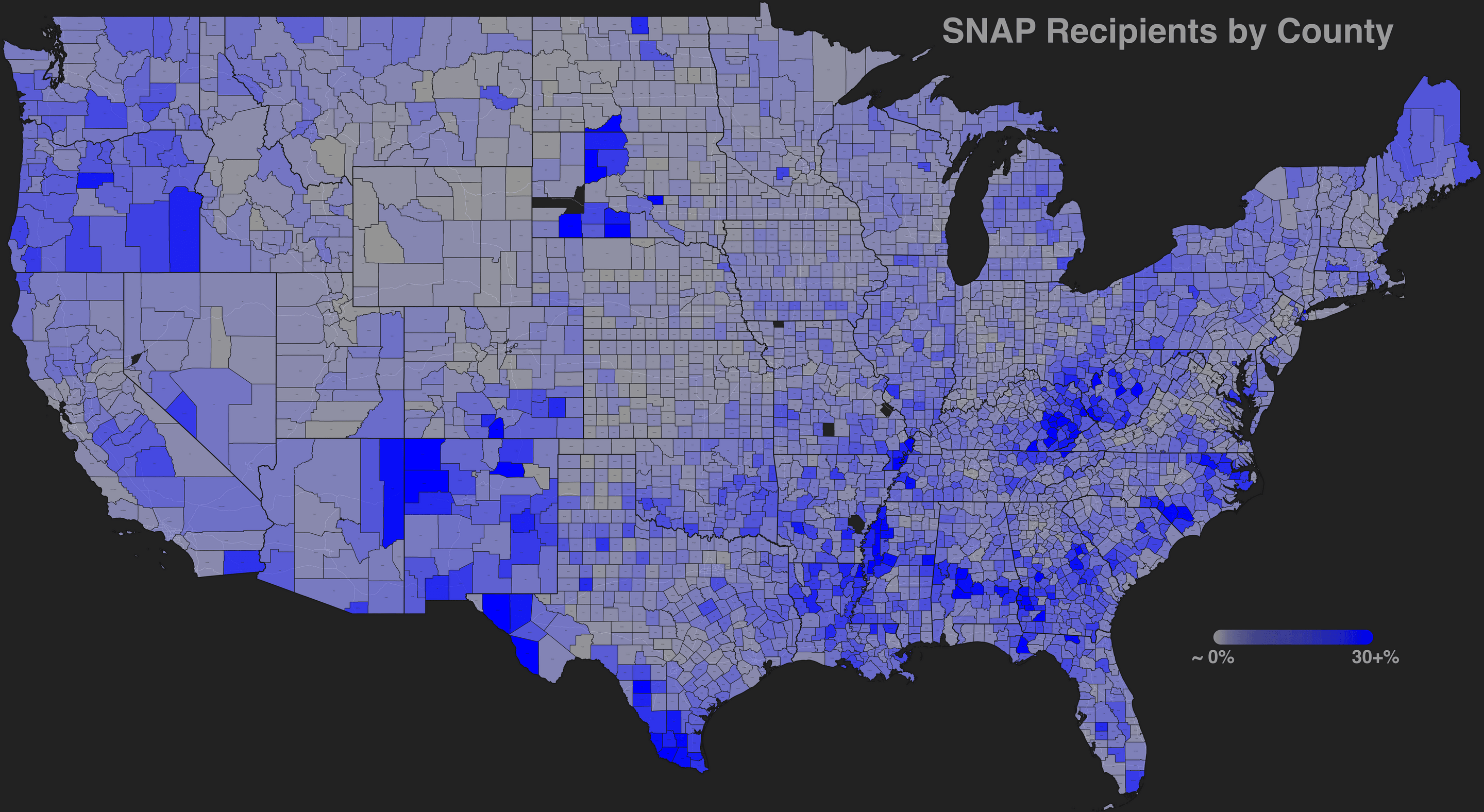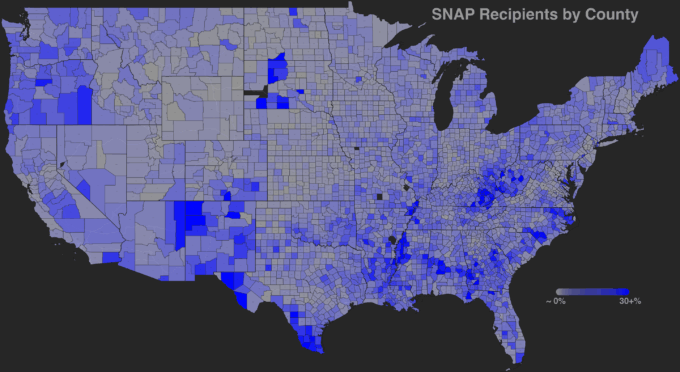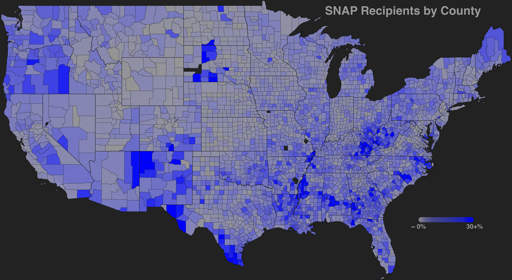

Image Source: Wikideas1 – Own work made with QGIS and data from https://frac.org/maps/snap-county-map/tables/snap-county-tab-2021.htm – CC0
I have followed economic reporting for many decades. I don’t generally give it high marks. Maybe I’m just stupid for thinking the purpose of reporting is to provide information to the audience. By that standard the media fail horribly.
The most obvious and painful way is that, as standard practice, they print huge budget numbers that they know are almost meaningless to their entire audience. They refuse to take the ten seconds that would be needed to, for example, tell readers that the $100 billion annual SNAP budget is 1.4 percent of total spending.
This small bit of information would immediately tell readers that substantial cuts to the SNAP budget, or even its complete elimination, would not have much impact on their tax bill or free up large amounts of money for a program that they might favor. Even knowing its true importance in the budget, it is possible that many people will still not approve of the program, which is fine. But at least then their disapproval would be based on a knowledge of the actual cost of SNAP, not some imaginary image of a welfare program gobbling up a large share of the budget.
The same story applies to other spending items that have often been targets of right-wing politicians. Depending on what exactly is included, foreign aid rarely topped 1.0 percent of the budget. PEPFAR, the AIDS program for Africa that saved tens of millions of lives — which Elon Musk killed with his chainsaw — cost 0.09 percent of the budget. The annual appropriation for public broadcasting cost 0.008 percent of the budget. Put that in your bank account.
For reality fans, the big items that gobble up the overwhelming majority of federal spending are Social Security, Medicare, Medicaid, the military, and interest on the debt. I have no idea why reporters can’t take the ten seconds needed to make huge budget numbers meaningful to their audience, but they don’t. I welcome (seriously) a non-nefarious explanation for why they don’t take these ten seconds, but reality is what it is.
I can and have given many other examples of ways in which economic reporting fails to inform readers, or misinforms them, but the New York Times and Vox took this failure to another level this week. Both of them told their audience that Trump’s outright lies about the economy were the same thing as Biden’s alleged tone deafness in discussing economic data.
The New York Times committed this sin in a piece that reported on how Trump has been angered by complaints about affordability. (This was also flagged by Paul Krugman in his Substack.) It then cited outright lies by Trump, about how prices have fallen:
“’2025 Thanksgiving dinner under Trump is 25% lower than 2024 Thanksgiving dinner under Biden, according to Walmart,’ Mr. Trump wrote in a post onThursday. ‘My cost are lower than the Democrats on everything, especially oil and gas! So the Democrats ‘affordability’ issue is DEAD! STOP LYING!!!’”
The Times then told readers:
“Mr. Trump risks being in a similar position as his predecessor, defending his record by pointing to statistics that don’t capture a troubling reality that many Americans are feeling.”
Vox did virtually the same thing in its Podcast, Today Explained, which had a segment with Democratic political consultant David Axelrod. Axelrod used very similar language to tell listeners that Trump risked making the same mistake as Biden.
To be as clear as possible, Trump is telling outright lies. Gas is not near $2.00 a gallon anywhere in the country. (This is one of Trump’s frequent claims.) In fact, the average price is over $3.00 a gallon, almost exactly the same as it was a year ago. The price of almost every food item is up over the level when Trump took office, and some like coffee, up by double digits.
Biden spoke truthfully about the economic successes of his administration. That would be items like a record pace of job creation and quick recovery from the pandemic recession. The longest stretch of low unemployment in 70 years and the lowest rate of unemployment for Black workers ever. There were also substantial gains in real wages (i.e., wage growth exceeded inflation) with the sharpest gainsfor low-paid workers in more than half a century.
And inflation came down quicky from its 2022 peak, getting almost back to the Fed’s 2.0 percent target by the 2024 election. And this drop in inflation occurred without the severe recession that was widely predicted. Unemployment remained very low by historical standards.

I’m economist, not a theater critic, so I will leave it to others to determine whether Biden was “tone deaf,” but his claims about the economy were truthful. Trump’s claims about the economy are fantasies. We can’t know whether they are deliberate lies, or in his current mental state Trump has no idea about how the economy actual looks. But we do know that what Trump is asserting is not true.
Equating these outright falsehoods with Biden’s possibly impolitic remarks is horrible journalism. Both The New York Times and Vox owe a bigtime apology to their audiences.
This first appeared on Dean Baker’s Beat the Press blog.
The post Being Tone Deaf Is Not the Same as Telling Outright Lies: That Should be Obvious appeared first on CounterPunch.org.
From CounterPunch.org via this RSS feed


